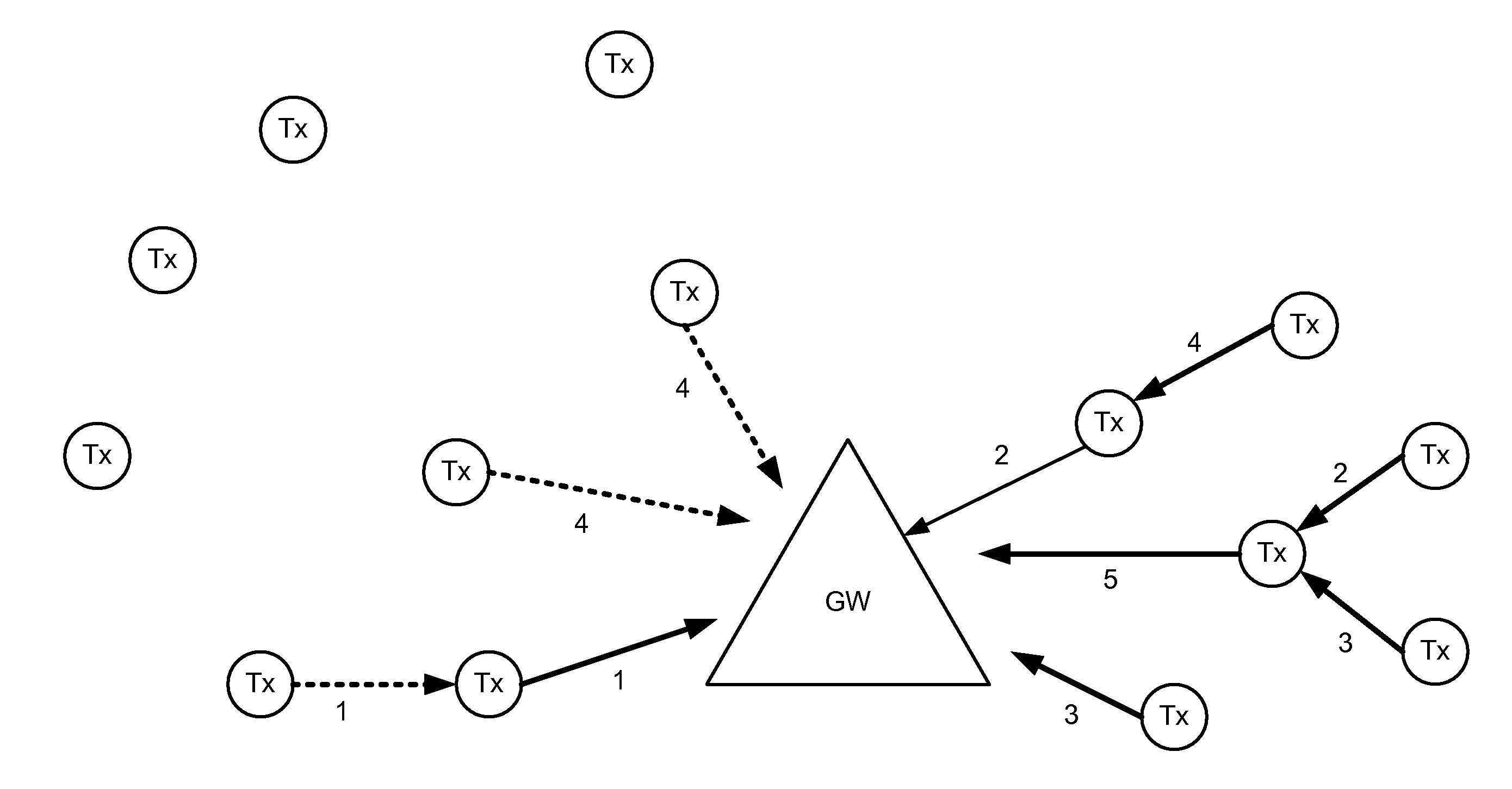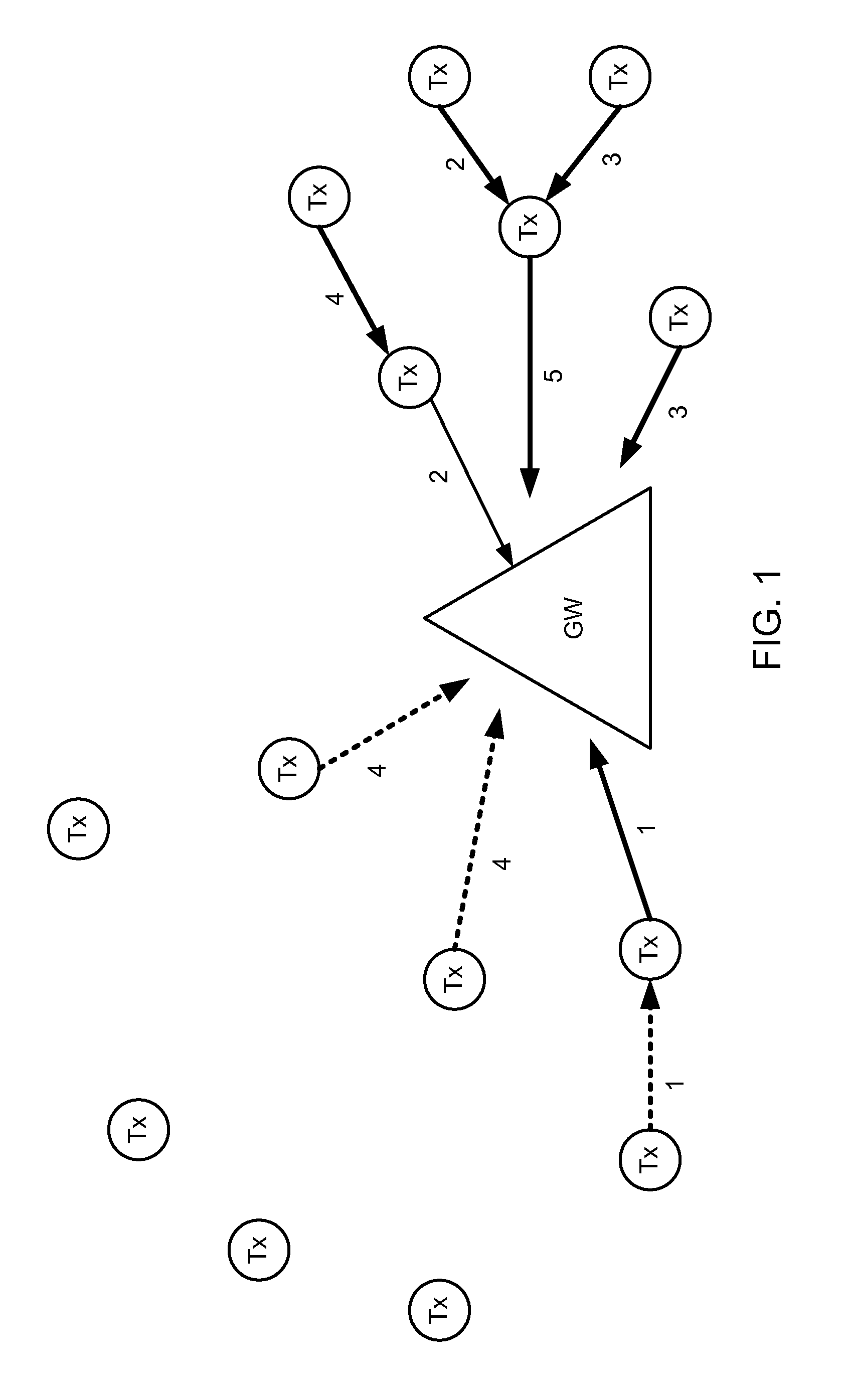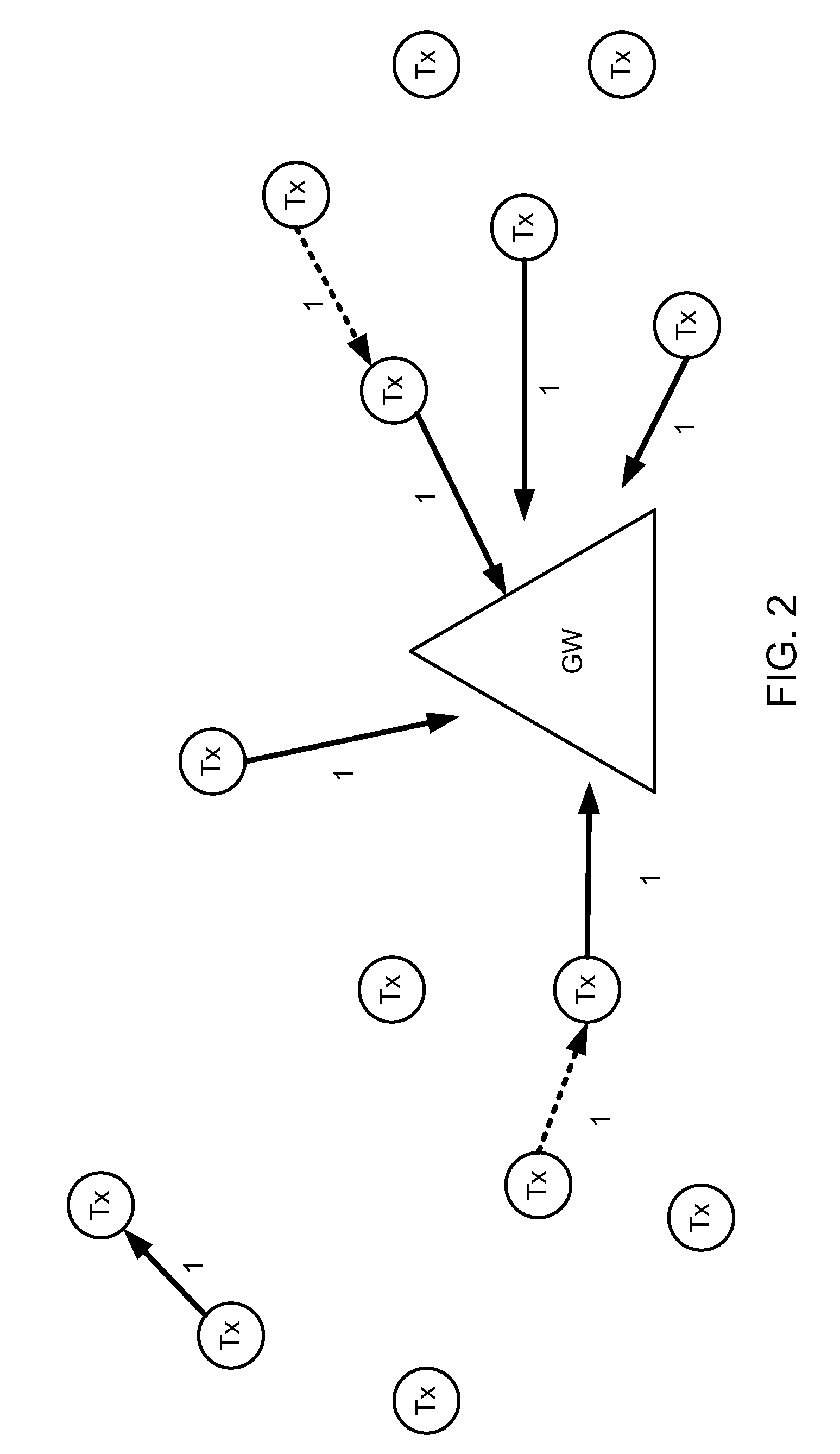Multi-channel mesh nodes employing stacked responses
a multi-channel, stacked technology, applied in the field of communication networks, can solve problems such as traffic bottlenecks in the mesh network, form bottlenecks in the mesh, and limitations of such an approach
- Summary
- Abstract
- Description
- Claims
- Application Information
AI Technical Summary
Benefits of technology
Problems solved by technology
Method used
Image
Examples
Embodiment Construction
[0028]The methods and systems described herein generally pertain to mesh networks in which two-way communications take place between a sending, or source, node and a receiving, or destination, node. One instance of a two-way communication occurs when the source node sends a data packet to the destination node, and the destination node responds with an acknowledgement, or “ACK” packet, to inform the source node that the data packet was successfully received. In accordance with a typical network protocol, if the source node does not receive the ACK packet within a certain period of time after sending the data packet, it might re-send the data packet at regular intervals until either an ACK packet is received or a time-out condition occurs.
[0029]Other examples of two-way communications are also prevalent in a typical network. For instance, a source node might send a request to a destination node, such as a gateway or access point, for a certain type of information relating to the opera...
PUM
 Login to View More
Login to View More Abstract
Description
Claims
Application Information
 Login to View More
Login to View More - R&D
- Intellectual Property
- Life Sciences
- Materials
- Tech Scout
- Unparalleled Data Quality
- Higher Quality Content
- 60% Fewer Hallucinations
Browse by: Latest US Patents, China's latest patents, Technical Efficacy Thesaurus, Application Domain, Technology Topic, Popular Technical Reports.
© 2025 PatSnap. All rights reserved.Legal|Privacy policy|Modern Slavery Act Transparency Statement|Sitemap|About US| Contact US: help@patsnap.com



